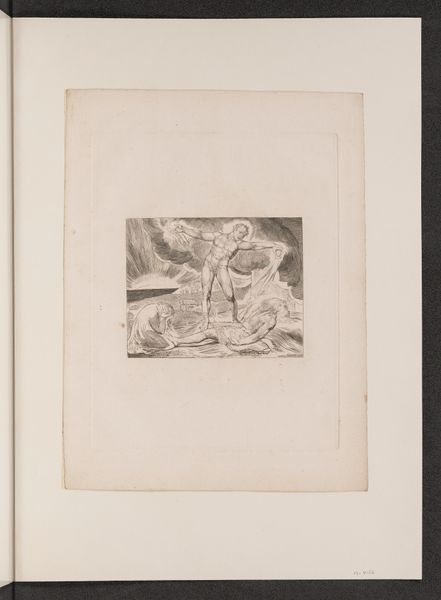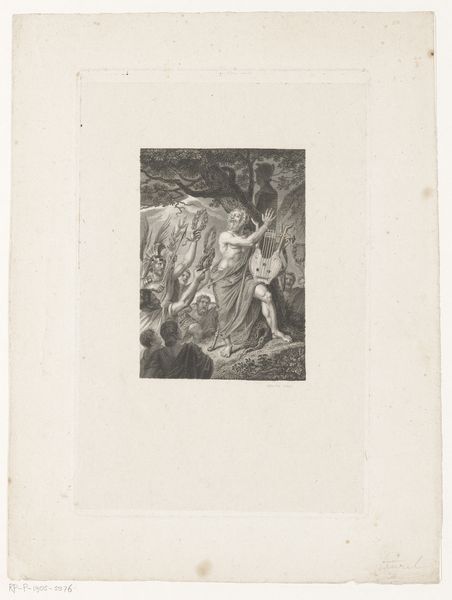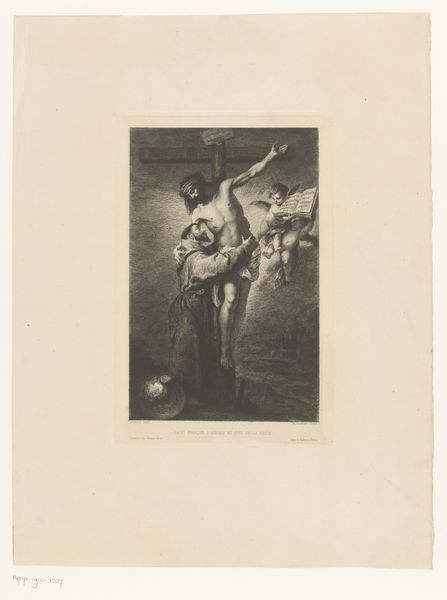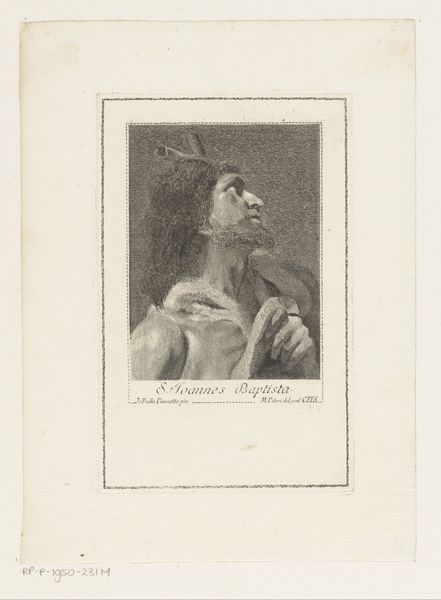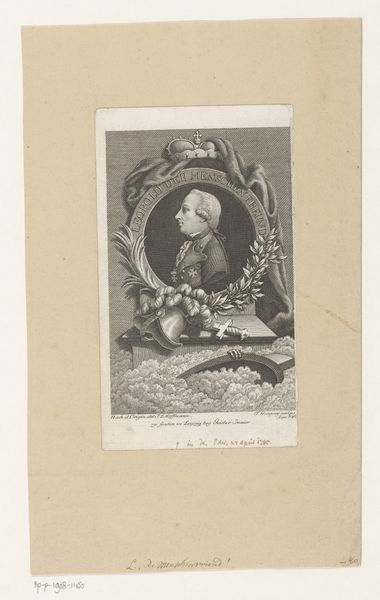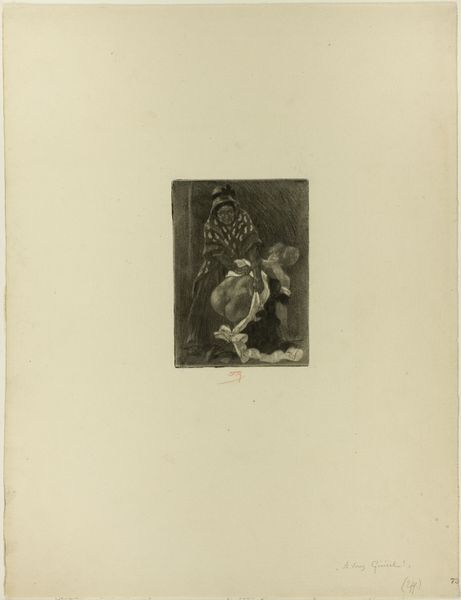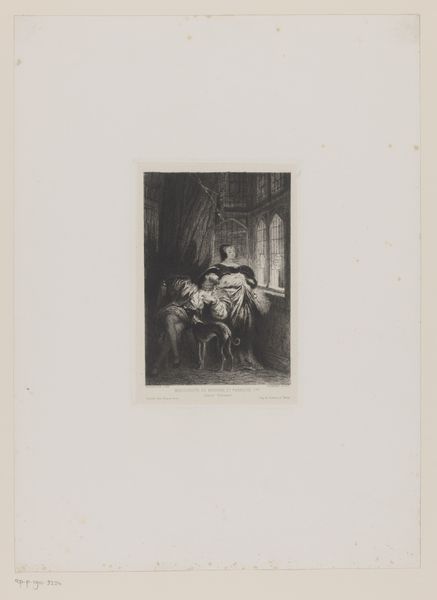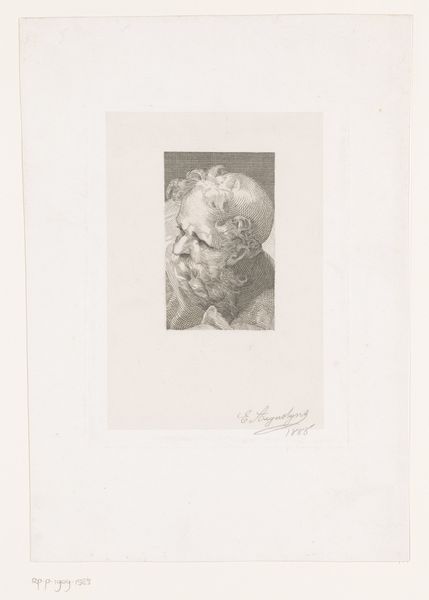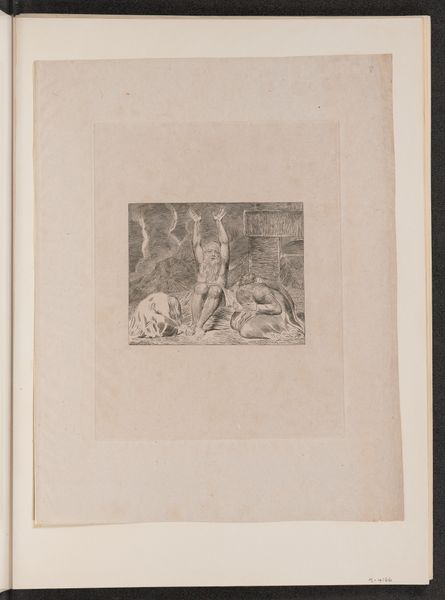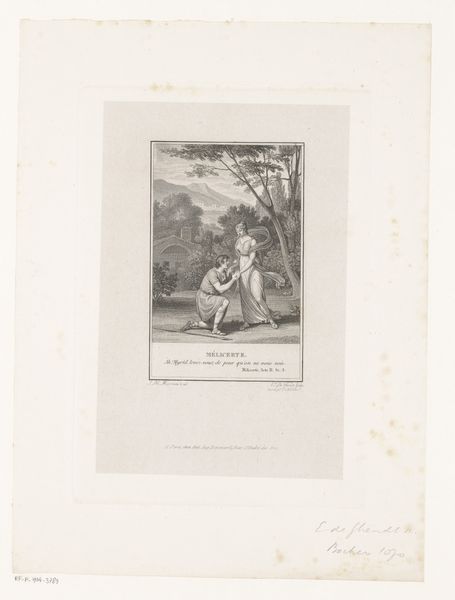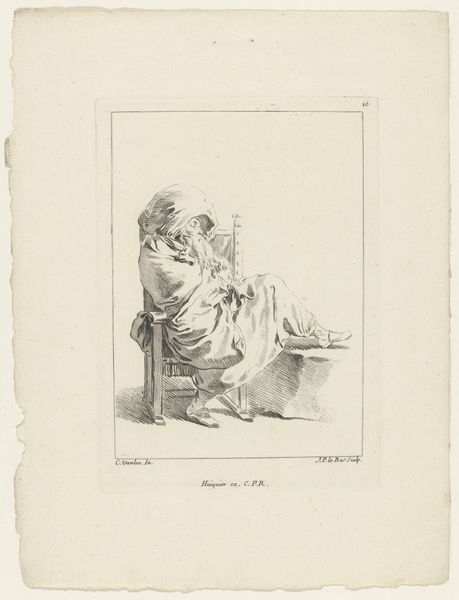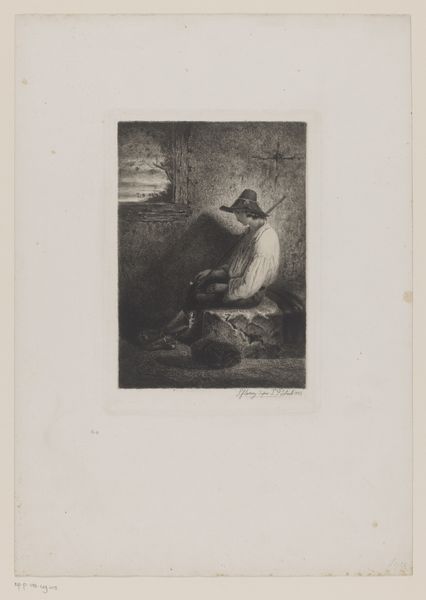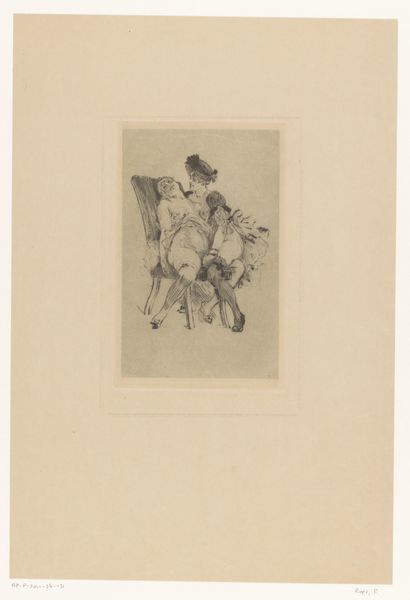
print, engraving
#
aged paper
#
baroque
# print
#
old engraving style
#
old-timey
#
history-painting
#
engraving
Dimensions: height 160 mm, width 102 mm
Copyright: Rijks Museum: Open Domain
Curator: Before us, we have an engraving titled "Apostel Mattias," crafted between 1712 and 1786 by Giovanni Marco Pitteri. Editor: The hatching technique is stunning. You can almost feel the aged quality of the paper itself. He has such an intense gaze. Curator: Indeed. Pitteri was an important figure in Venetian printmaking, particularly known for his reproductive engravings after paintings by Venetian masters. He was actually ensuring the wider distribution and knowledge of the featured painting in his local cultural community. Editor: This print flattens out Battisa Piamozetta's work but then gives access to it. How was this made, actually? The incised lines are so deliberate and neat! I wonder about the social conditions of the engraver here; did Pitteri face restrictions in sourcing his materials, or in the production of a commissioned work that represents a larger system and social history? Curator: That's a very valid perspective. It invites considering this work as an art object for those who could not afford or access the paintings directly. This allows wider social groups to collect art at an accessible price. I'd argue that it democraticized art access and knowledge production in the 18th century, echoing the intellectual fervor of the Enlightenment. Editor: Definitely. It's compelling how a relatively humble material—paper, ink—can circulate powerful imagery and, as you noted, social access, even. Pitteri's "Sanctus Mattias" acts as a critical cultural artifact. He captures the detail to translate Piamozetta's intention. It really calls to mind questions about labor, not just the artisan aspect of it, and to imagine the kind of viewer that consumes such a production and who dictates those desires to own religious prints. Curator: Exactly, and that access would inevitably shift, affecting social norms as people grew to connect differently to art. It is quite striking to see this Baroque aesthetic available to more people through this accessible media. Editor: And that contrast really shows the cultural landscape, giving us a chance to reconsider both production and consumption, as Pitteri and his team sought their access too, into that broader historical, and social matrix.
Comments
No comments
Be the first to comment and join the conversation on the ultimate creative platform.
